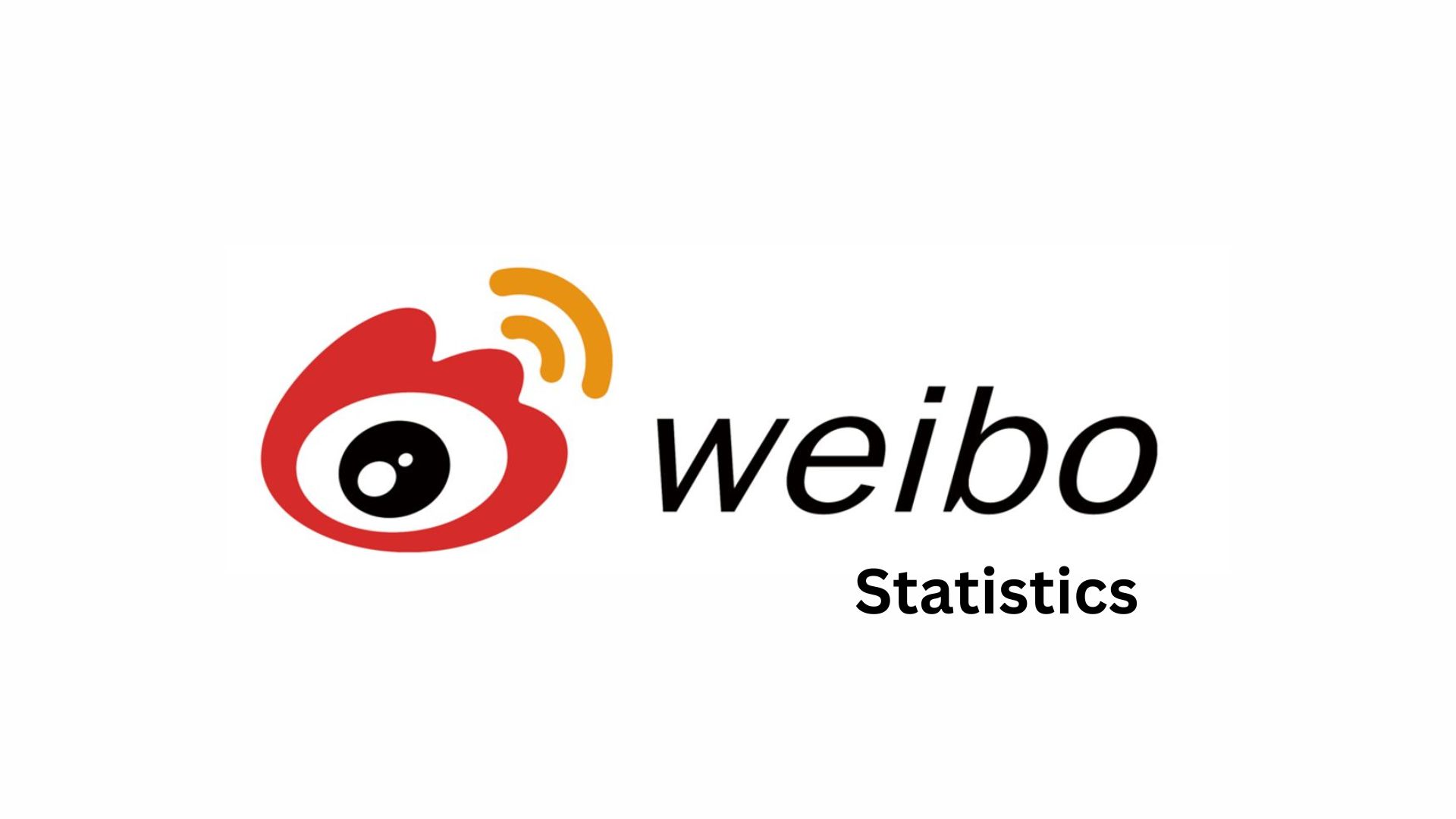GitLab Statistics And Facts (2025)
Updated · Jul 02, 2025
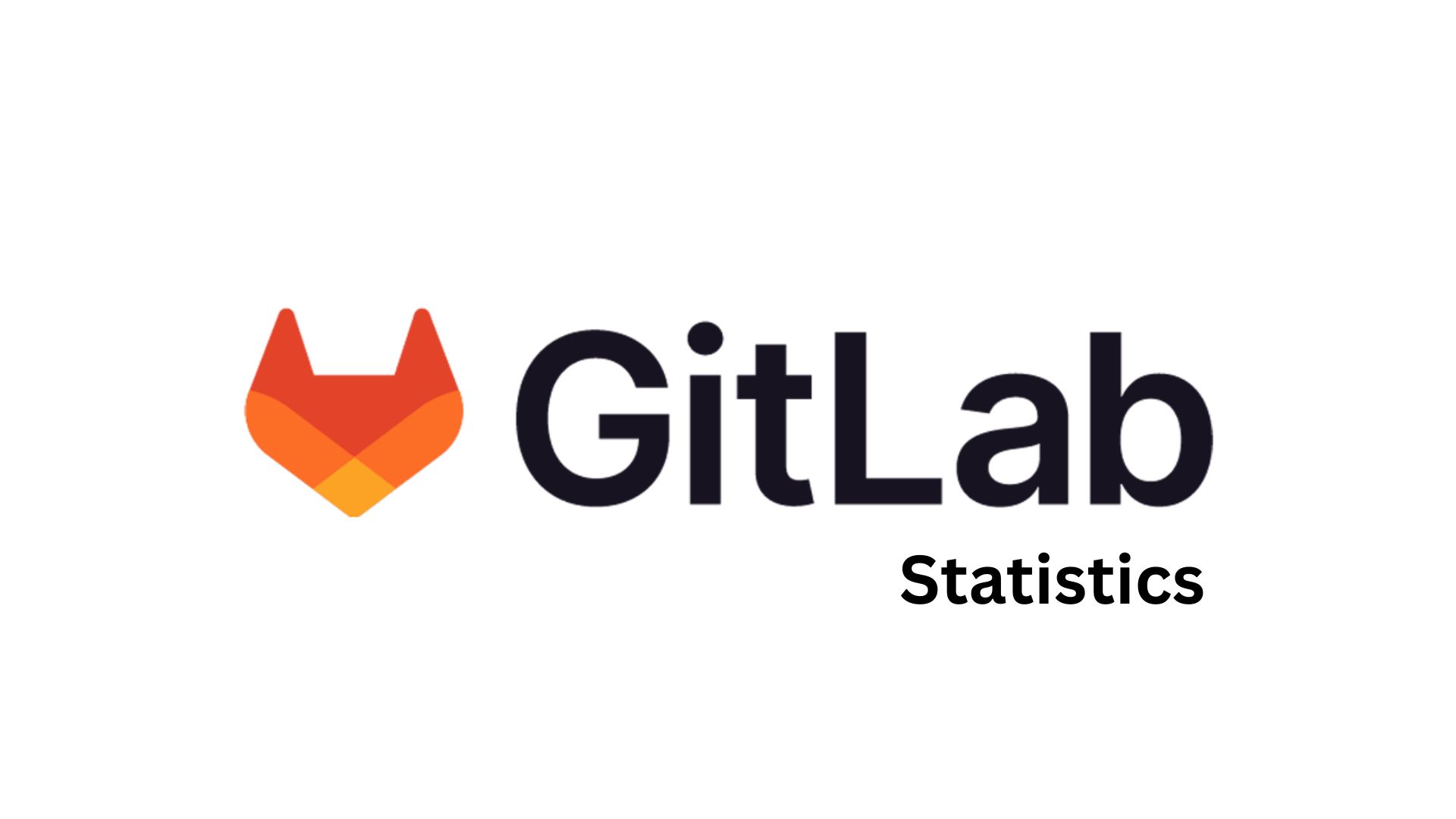
Table of Contents
Introduction
GitLab Statistics: GitLab, a prominent DevSecOps platform, made significant strides in 2024, focusing heavily on integrating artificial intelligence (AI) to automate and streamline software development. As of the fiscal year ending January 31, 2024, GitLab reported a revenue of approximately USD 491 million, reflecting a 33% increase year-over-year. The company also reported over 30,000 paying customers, with more than 50% of the Fortune 100 using GitLab in some capacity. In 2024, GitLab introduced AI-assisted features like Code Suggestions, Explain This Code, and Value Stream Dashboards to enhance developer productivity.
Its AI tools processed over one million code generations per month by late 2024. GitLab also maintained strong community engagement, with over 3,000 contributors on GitLab.com and more than 100 releases made during the year. With a commitment to secure and efficient software delivery, GitLab continues to serve enterprises across sectors, including finance, technology, and government. The platform’s scalable single-application model and open-core strategy have supported its growth in both user adoption and functionality.
In this article, we delve into the GitLab statistics that define developments over the years.
Editor’s Choice
- According to GitLab statistics, the company raised revenue from US dollars 424.33 million, a growth of 67.9% against a collection of US dollars 252.65 million in 2022 to above US dollars 152.17 million in 2021, consistent with over 60% annual revenue growth.
- Subscription revenue, including SaaS and self-managed offerings, reached US$369 million in 2023, growing 63% from 2022 and 70% from 2021.
- Revenue from licenses and others increased from US$19.41 million in 2021 to US$54.99 million in 2023, showing a growth from 2022 to 2023 of 107%.
- The net loss has been reduced from US$192.19 million in 2021 to US$155.14 million in 2022, but again went up to US$172.31 million in 2023 due to investments in AI and in expanding the enterprise.
- The number of open source contributors increased from 2,600 in 2021 to 2,900 in 2022 and 3,500 in 2023, marking a total growth of 34.6% over the three years.
- GitLab statistics reveal that the workforce has grown from 1,629 team members in FY22 to 2,170 in FY23 and then declined slightly to 2,130 in FY24, indicating optimised hiring.
- New hiring was maximum at 848 for FY 23, falling to 401 for FY 24, suggesting a strategic slowdown in hiring.
- Employee turnover dropped steadily from 17% in FY22 to 14% in FY24, suggesting that retention has improved.
- Region North America will retain the largest workforce (declining from 58% to 54%), having slight growth in JAPAC (12% to 14%) and remaining the same in EMEA (around 31%).
- According to GitLab statistics, gender diversity has remained fairly constant over the years, consisting of women at 33%, men between 65% to 66%, and steadily increasing non-binaries from zero to 2% over the past three years.
- Employees below the age of 30 went from 17% to 13%, while those who are 30 to 50 increased from 72% to 76%, which means that the team gets relatively more experienced.
GitLab Revenue
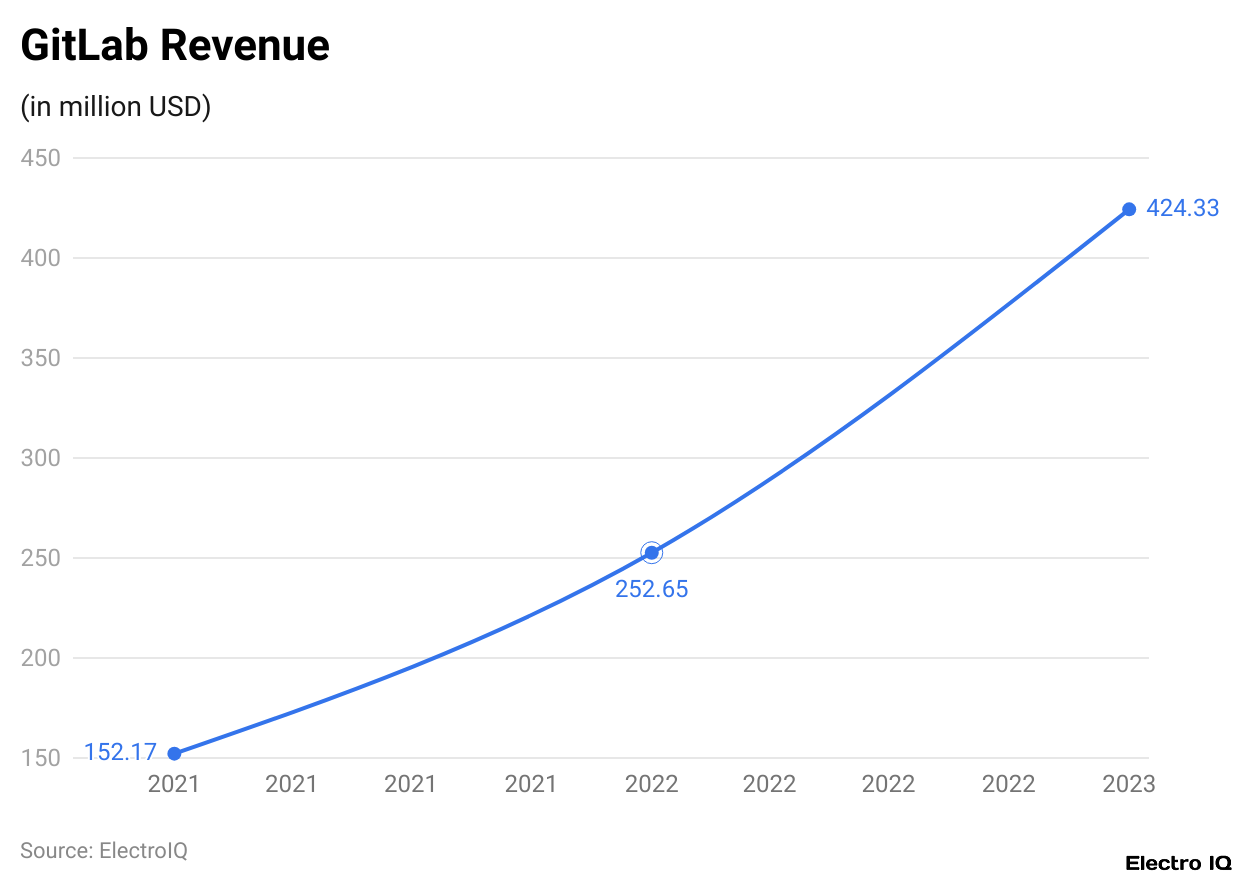
(Reference: fourweekmba.com)
- GitLab’s revenue has grown spectacularly in the past three years, confirming the increasing demand for its DevSecOps platform and services. In 2023, it stood at US$424.33 million, an impressive increase of 67.9% over the previous year.
- In 2022, GitLab’s revenues were US$252.65 million, a significant jump from US$152.17 million in the previous year.
- The 66%-plus growth from 2021 to 2022 shows that GitLab is growing consistently at more than 60% year-on-year.
- The steady increase in revenue is a clear indicator of GitLab’s increasing market share, successful customer acquisition strategies, and the growing importance of integrated development platforms with built-in security and automation capabilities.
- Enterprises now more than ever view GitLab as having great value in its proposition as companies invest in tools that enhance the software development process, especially as it integrates AI and enriches its cloud services.
- Three years of continuously rising revenue is also a pointer to the confidence and trust businesses now repose in GitLab to make managing their workflows and delivering secure, faster software that much easier.
GitLab Revenue Breakdown

(Reference: fourweekmba.com)
- The provided data depicts revenue breakdown for GitLab during the interval 2021-2023, categorised into “Subscription – self-managed and SaaS” and “License – self-managed and other”.
- The subscription revenue consists of self-managed installations and GitLab’s SaaS (cloud) offerings and has been increasing strongly, consistently, and rapidly.
- Starting at US$132.76 million in the year 2021, the revenue jumped to US$226.16 million in 2022, representing an npm growth rate of almost 70%.
- By 2023, the subscription revenue grew further to US$369 million, inclusive of 63% growth from the previous year. This steep incline endorses GitLab’s strong conversion push for a subscription-oriented revenue model propelled by broad-based adoption of DevOps, demand for cloud solutions, and rising market visibility for GitLab’s integrated DevSecOps platform.
- The license revenue, which accounts for perpetual or term licenses that are basically for self-hosted versions of the platform, continued to grow in 2022 and thereafter, but less aggressively than subscriptions.
- License and other revenues stood at US$19.41 million in 2021. It went up to US$26.49 million in 2022, showing a growth of about 36%.
- GitLab statistics show that in 2023, this category reached US$54.99 million, which is over double the figure of 2022, representing 107% year-on-year growth.
- This spike in 2023 assures that while GitLab remains busy in subscription talks, there is a performance-driven interest in licensing for enterprises with severe compliance or on-premises needs. In conclusion, these calculus signs highlight GitLab’s ongoing shift toward recurring revenue through subscriptions, which has become, and increasingly so, the bulk of the company’s revenues once again.
- GitLab statistics indicate that by 2023, subscription revenues accounted for over 87% of the company’s total combined revenues across the two categories, indicating a growing focus in its business strategy on Saas and self-managed subscription models.
GitLab Net Loss
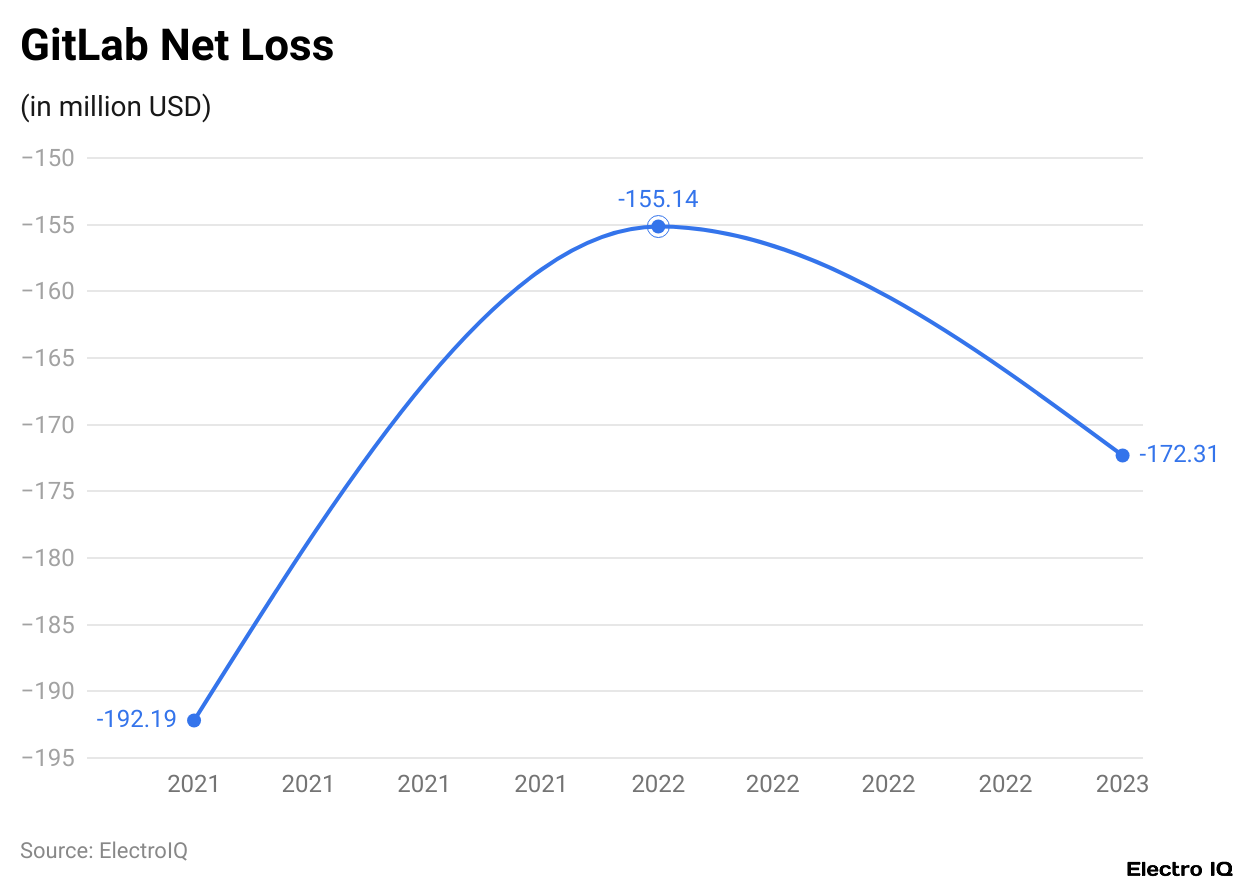
(Reference: fourweekmba.com)
- For the financially inclined, GitLab’s figures from 2021 to 2023 show that it has been in the red throughout these years; a testimony to the fact that it has had a tough time achieving profits despite very strong revenue growth.
- In 2021, the company registered a net loss of US$192.19 million. This was the year in which it invested aggressively in product development, talent acquisition, and infrastructure for its fast growth. The company was scaling very rapidly, and such losses, at those levels, were fairly common for tech firms in that life stage.
- Fast forward to 2022, and this loss has diminished to US$155.14 million. This almost 19% reduction speaks of some enhancement in operational efficiency or perhaps a better-controlled approach to spending while pouring on revenue growth.
- GitLab statistics show that with a small reversal, 2023 saw GitLab reporting a bigger net loss of US$172.31 million, about 11% greater than the loss in 2022.
- An increase in losses can be attributed to the increased amount spent on innovation, especially in artificial intelligence efforts such as GitLab Duo, as well as higher marketing and sales spending to entice further enterprise customers.
- While these expenditures have fueled top-line growth and have increased GitLab’s presence in the market, they have also perpetuated negative earnings.
- These consistent losses with increasing revenue underline the mark of a true growth-stage mindset: investing in growth and customer acquisition over near-term earnings.
- It seems that GitLab aims to capture more of the DevSecOps market and develop its product ecosystem at the expense of near-term profit. Its roadmap to profitability likely hinges on its ability to continue to ramp up its high-margin subscription revenue while maintaining operational costs on a tighter leash in the future.
GitLab Open Source Contributors
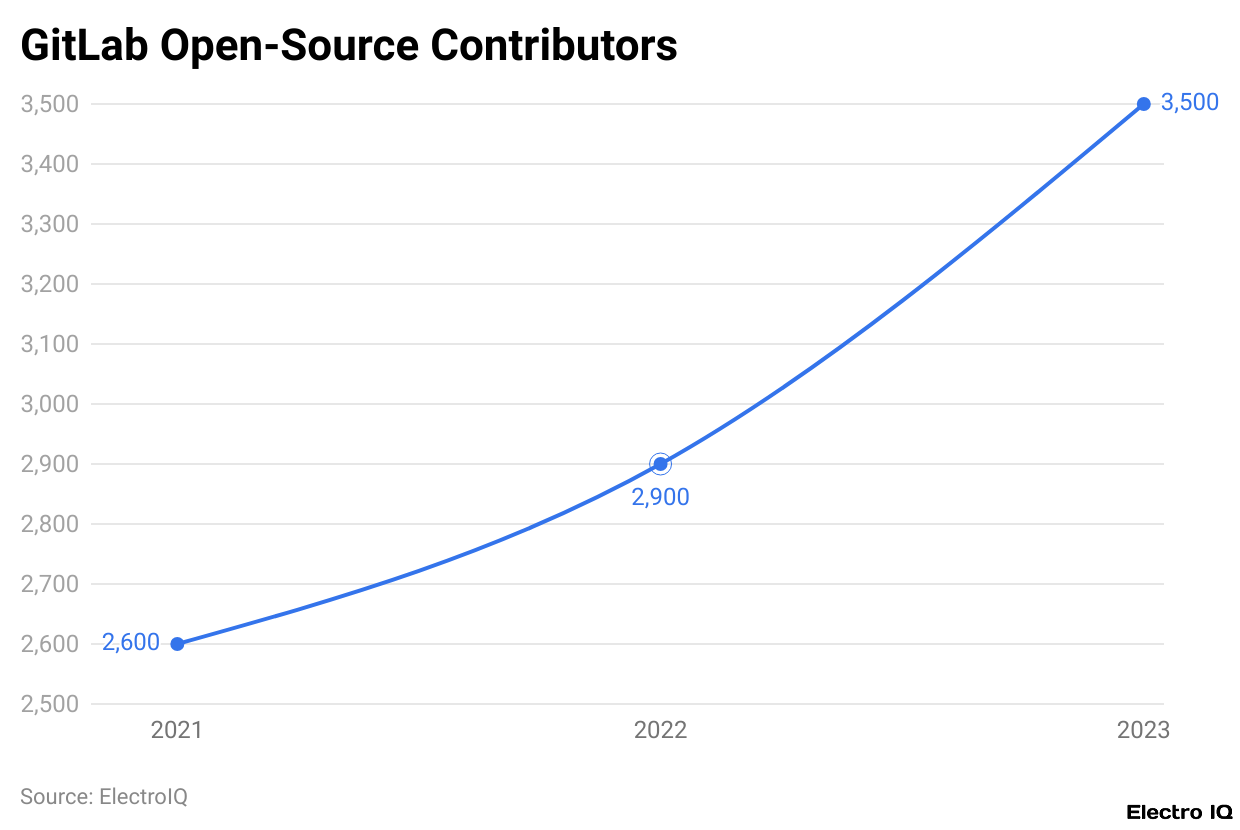
(Reference: fourweekmba.com)
- According to GitLab statistics, the community of open source contributors within GitLab has been increasing over time over the last three years, reflecting the strength and health of the developer community associated with GitLab. GitLab recorded close to 2600 contributors in 2021.
- This increased to 2900 numbers in 2022, which translates to an 11.5% year-over-year increase. Then, in 2023, the contributor count jumped to 3,500, which is a significant increase of 20% from the previous year.
- Bibliometrics offers an emerging trend in collaboration. This is the factor that strengthens GitLab among developers as a continuation of open-source collaboration among people over time.
- The growing trend means that more and more developers are starting to become part of the platform’s development activities, from submitting code to bug fixes, documentation, or feature contributions.
- It also means that more people are trusting the wider tech community to see the value in becoming engaged in the evolution of GitLab.
- The spike is also in line with GitLab’s strategy of building a product that is not only company-driven but is also community-driven. While it maintains an open development process, it also encourages participation by individuals outside its internal teams; GitLab effectively uses a much wider pool of innovation for faster iteration cycles.
- The increasing contributor lists also show that more and more people are turning toward GitLab as the new favourite DevSecOps tool for a person or organisation.
GitLab Workforce
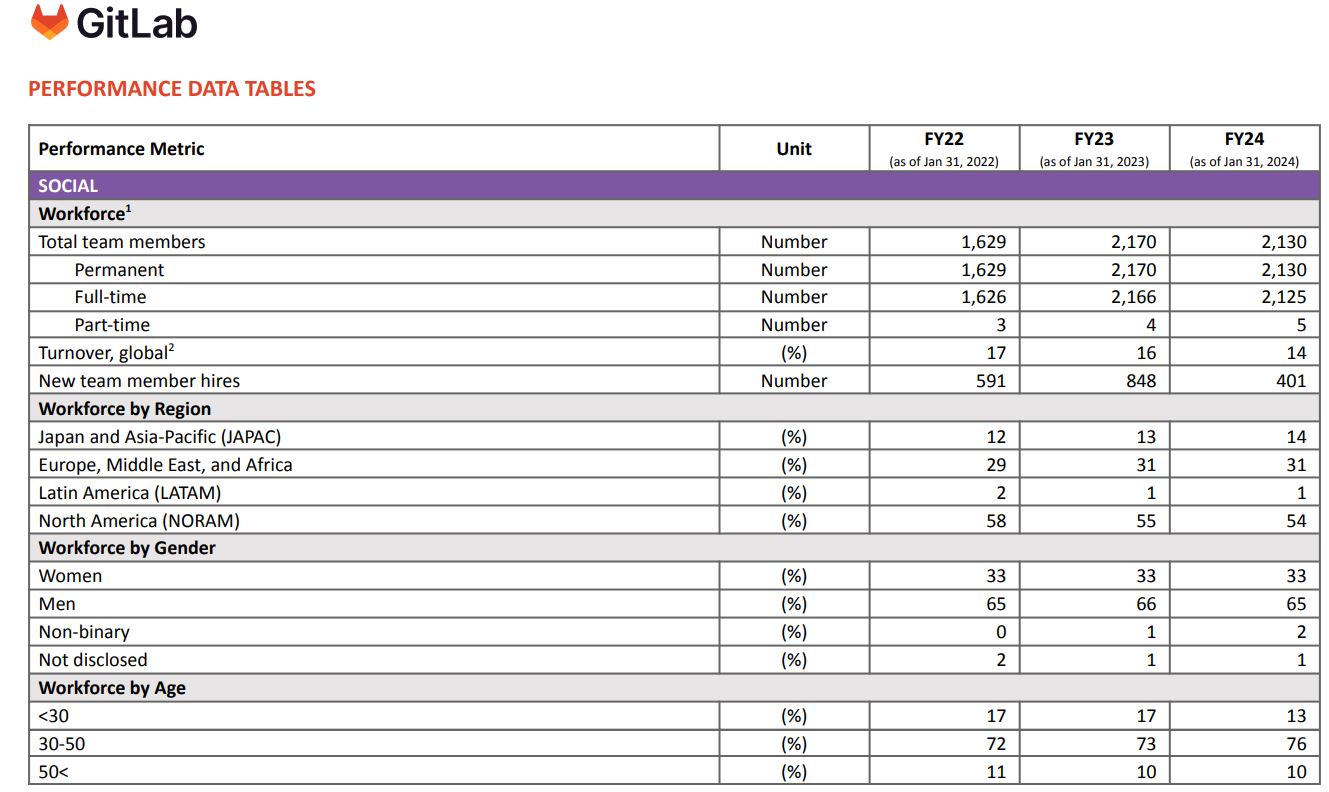
(Reference: about.gitlab.com)
- GitLab statistics show that across the three fiscal years 2022-2024, GitLab’s employee numbers reflected growth intertwined with strategic shifts. FY22 witnessed GitLab employing 1,629 of its team members as permanent employees.
- The number rose sharply to 2,170 for the year FY23, demonstrating an aggressive hiring-and-growth phase.
- Then slightly down in FY24 to 2,130, this figure likely suggests a much more conservative approach to hiring, depending on shifting business priorities or focus on efficiency.
- The contrast in full-time versus part-time roles shows that a vast majority of GitLab’s team has been engaged in full-time employment.
- There were 1,626 full-time team members in FY22, which increased to 2,166 in FY23 and then slightly decreased to 2,125 in FY24. Part-time roles have remained negligible but grew, from negligible 3 in FY22 to 5 in FY24.
- The global turnover rate has kept decreasing, and this bodes well for GitLab. From 17% in FY22, it declined to 16% in FY23 and down to 14% in FY24, signalling retention of employees for longer periods, which could lead to higher job satisfaction or better fitting to the culture.
- The cycle of growth for the company is also represented through new hires. GitLab made 591 hires in FY22, an accelerated jump to 848 in FY23, an intense year of expansion.
- FY24 slowed way down, only adding 401 new hires, suggesting a conscious reduction for consolidation or purposefully keeping the operation lean.
- Local workforce distribution in GitLab was relatively constant, but with certain trends to observe. North America has always hosted the largest share of people working for GitLab, although this shrank from 58% in FY22 to 54% in FY24.
- Europe, the Middle East, and Africa (EMEA) remained steady, increasing marginally from 29% in FY22 to 31% in both FY23 and FY24.
- The Japan and Asia-Pacific region (JAPAC) grew incrementally from 12% to 14%, perhaps indicating awareness and expansion in that market.
- On the other hand, Latin America stayed relatively small, keeping at about 1% in FY23 and FY24 and down from 2% in FY22.
- Gender distribution appears to be quite stable. Women accounted for 33% of the workforce, while % age of male workers ranged from 65-66%.
- GitLab statistics show that the percentage of team members who identify as non-binary increased from 0% in FY22 to 2% in FY24, which is a meaningful measure of progress in diversity and inclusion. Disclosures stayed low, around 1-2%.
- The age demographics indicate an ageing workforce. In FY22 and FY23, those under 30 were 17% of the team, which dropped to 13% in FY24.
- The other age strata, those from 30 to 50 years, were the majority and increased their numbers from 72 % to 76 %.
- Employees beyond 50 held steady at about 10-11%, indicating that GitLab encompasses a multi-generational workforce that increasingly gains workplace experience and career maturity.
GitLab Remote Workforce
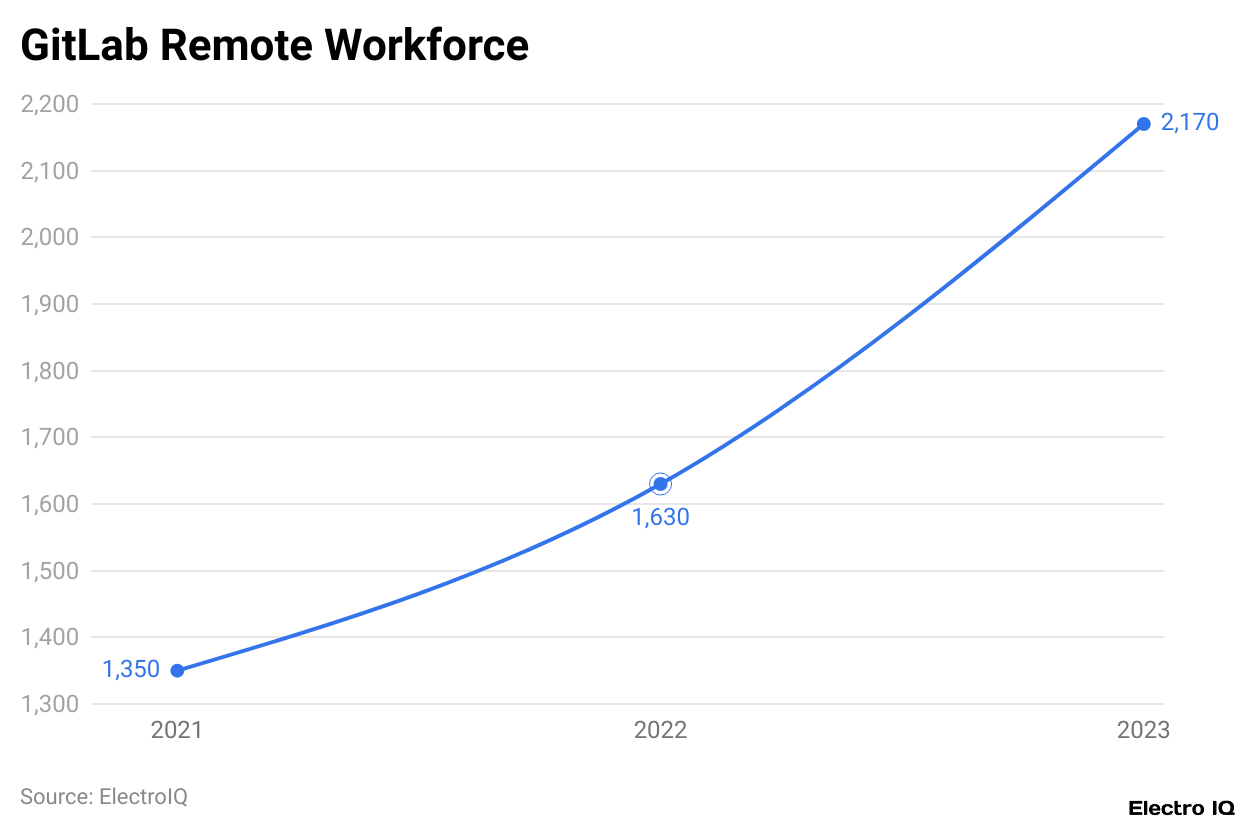
(Reference: fourweekmba.com)
- According to GitLab statistics, the number of GitLab open-source contributors has grown steadily over the past three years. This goes to show how much the interest of the developer community is in how the platform is made or developed.
- In the year 2021, GitLab had approximately 2,600 open source contributors from the community. This grew to 2,900 in 2022, representing a solid rise of about 11.5 donation rates and a healthy and growing community again.
- From 2022 to 2023, it jumped massively to 3,500 contributors, representing a significant increase of 20.7% from the previous year. This says only that GitLab’s fame has been spreading, but it also indicates that the open core model shown is how community members are brought on board by engaging them to contribute to development, make suggestions on any improvements, and fix bugs.
- The rapid increase of contributors, in summary, means GitLab’s platform and culture are in sync with developers, and that the company gives tools, documentation, and support effectively to help people get involved.
- This type of growth is beneficial directly to GitLab as well. The more contributors on the model quickly develop new functionality, test improvements, and fix bugs or security issues.
- It also shows the trust in GitLab by the global community of developers who are supposed to enforce this trust in a platform that markets itself as the centre of the DevOps lifecycle.
- As participation is increased, the open-source becomes a potential feed into GitLab’s innovation pipeline and reputation in the broader technology ecosystem.
Conclusion
As per GitLab statistics, the company’s performance will be proof of its commitment to innovation, customer satisfaction, and financial prosperity. Such strategic initiatives as AI integration and platform enhancement have cemented the company’s credibility as an industry leader in the realm of DevSecOps. GitLab undoubtedly is set for continuous evolution to meet an ever-changing software development community’s diverse needs.
Sources
FAQ.
It is US$424.33 million in revenues for GitLab in 2023, a 67.9% increase from US$252.65 million in revenues for the previous year, and US$152.17 million in 2021. This indicates an annual revenue growth of more than 60% through the continuous adoption of its flagship DevSecOps platform and other enterprise-focused features.
Two components are the main revenue branches for GitLab Subscription Revenue (SaaS and self-managed): Grew from US$132.76 million in 2021 to US$369 million in 2023. An increase was recorded from US$19.41 million in 2021 to US$54.99 million in 2023. By 2023, more than 87% of total income will come from subscriptions, indicating the fact that GitLab is moving to recurrent revenue sources.
GitLab has not reached profitability yet. The net loss incurred by it in 2023 was US$172.31 million which has gone up from US$155.14 million in 2022 but is still lower than US$192.19 million in 2021. The net loss incurred in 2023 is caused by investments in AI and enterprise expansion, a reflection of a long-term strategy that looks toward growth while deliberately foregoing short-term profits.
The number of employees at GitLab was 1,629 in FY22, increasing to 2,170 in FY23, and then marginally going down to 2,130 in FY24. This shows that new hires amounted to a maximum of 848 employees in FY23, then decreased to 401 in FY24, which brings evidence that the company has employed a much more strategic and optimised hiring model. Employee turnover improved from 17% in FY22 to 14% in FY24.
In 2021, GitLab’s open source contributor base was around 2,600. By 2023, this figure had risen to about 3,500, representing a remarkable 34.6% increase over three years. Supporting evidence of a very strong engagement and trust with the community. It would also forever maintain a fully remote workforce model with global talent and collaboration using modern, distributed workspaces.

Maitrayee Dey has a background in Electrical Engineering and has worked in various technical roles before transitioning to writing. Specializing in technology and Artificial Intelligence, she has served as an Academic Research Analyst and Freelance Writer, particularly focusing on education and healthcare in Australia. Maitrayee's lifelong passions for writing and painting led her to pursue a full-time writing career. She is also the creator of a cooking YouTube channel, where she shares her culinary adventures. At Smartphone Thoughts, Maitrayee brings her expertise in technology to provide in-depth smartphone reviews and app-related statistics, making complex topics easy to understand for all readers.





